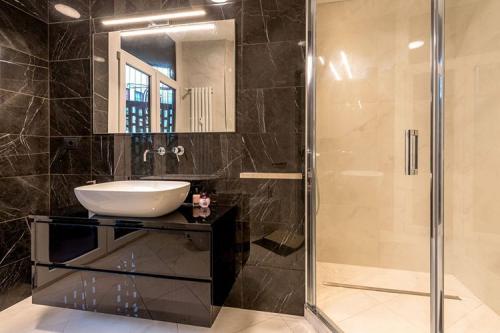How much do you know about the manufacturing of tiles?

The tile one of the main decoration elements nowadays. There are tiles of different types, colors, and materials found in the market. But, do you know, how tiles are manufactured in the first place? In this article, we are going to talk about this.
The Atomization
From the clay and kaolin mines, they are extracted and transported to the factory. The first step in the process is called atomization of the clay. It consists of diluting the material in water until it is very liquid (more than 80% humidity). An atomizer is a thermal machine with a cylindrical body and an inverted conical base, in which, using pumps, the humid clay is poured through its upper part while a huge flow of very hot air is injected through the lower part (about 580ºC) generated by a system of high-performance fans and burners or by taking advantage of calorific surpluses from cogeneration systems. When both flows cross, there is almost instantaneous evaporation of the water present in the slip until its humidity is reduced to 6%.
The clay thus prepared is stored in silos from where, the actual tile manufacturing process begins- PRESSING, DRYING, GLAZING, AND BURNING.
Pressing and Drying
The pressing machine’s function is to give shape and a certain consistency to this clay powder by a hydraulic circuit. Upon release from the pressing machine, the future tile already has its final shape, although it will undergo contractions in the firing process. These pieces, which we can easily break by hand, are then passed to a dryer that reduces their humidity to below 1%.
Following the dryer are the enameling lines, where the pieces receive successive layers of liquid enamels, serigraphs, powdered enamels, injected enamels, etc. These phases of the process normally work 16 hours a day 5 or 6 days a week, while the furnace works uninterruptedly 24 hours a day about 330 days a year. These wagons, just before unloading go through a drying tunnel that eliminates the residual moisture and preheats the material to about 80ºC.
Burning
he kiln, which measures between 100 and 150 meters long, is continuous so that rows of tiles are permanently fed on rollers that rotate continuously, as the material advances, passing over that roller path through the inside the oven, finding the right temperature in each area. Depending on the material to be fired, the maximum temperature ranges from 1120ºC for a wall tile, called cladding, to 1170ºC for a stoneware floor and up to 1240ºC for a porcelain tile. At the exit of the oven, the material has already been cooled in the last third of its journey or a little more and can be manipulated.
Some of this material is already sorted in the quality control machines and packed and the rest goes to the grinding and polishing sections to give a somewhat different final appearance.
And so, in less than 3 hours we can have a handful of dust turned into a beautiful tile whose life will be long. During the entire process, the actions of the factory workers are to monitor and control the process. Nobody touches a tile in the whole process, not even the boxes in which they are packed.
Post Your Ad Here
Comments